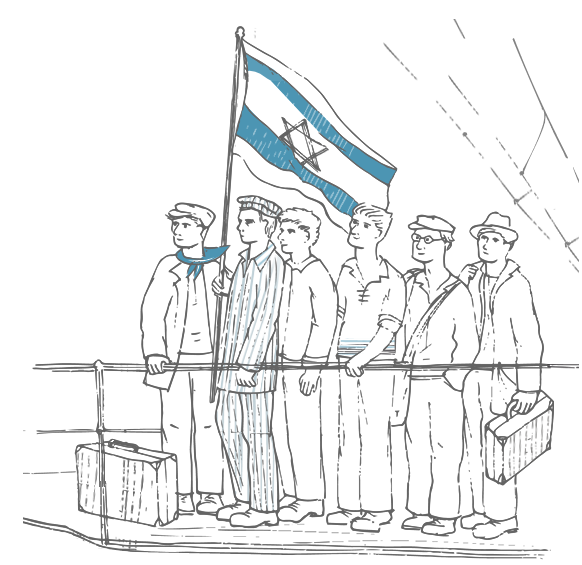Holocaust Survivors and the State of Israel

“These people left no traces … I have adopted them as my family”

“These people left no traces … I have adopted them as my family”
Yehuda Szternfeld founded numerous commemorative programs for Holocaust survivors who fell in Israel’s wars.
Yehuda Szternfeld, the youngest of five children in his family, was born in Lodz in 1930. The Germans occupied his hometown on September 8, 1939, and immediately began to subject the Jews to brutal persecution. In early 1940, the Jews of Lodz, including the Szternfelds, were sent to the Lodz ghetto. Two of Yehuda’s brothers escaped, one to Warsaw and the other to Bialystok, but both perished. Yehuda’s father died in the ghetto; his mother and sister were sent to Chelmno and murdered in 1942. Yehuda remained in the ghetto until August 1944, when he was deported to Auschwitz. After about two weeks there, he was sent to the Kaufering camp in Germany for forced labor. He worked in various camps until April 1945, when he was evacuated in a train that was liberated by American forces on April 29. After the war, in November 1945, Yehuda, the only surviving member of his family, immigrated to Palestine.
In 1998 Yehuda launched an initiative to commemorate Holocaust survivors who fell in Israel’s War of Independence. These 433 survivors, each the only surviving member of his family, had settled in Israel before statehood, enlisted in the Israel Defense Forces or the underground organizations that preceded it, and fell in the War of Independence with neither descendants nor acquaintances to commemorate them. Yehuda recounts, “These people left no traces. There is no one who will remember their names; no one who will place a flower for them on their graves. I feel as if I have adopted them as my family.” Thanks to Yehuda’s initiative, the Jewish National Fund erected a monument in their memory. The monument, engraved with the names of the fallen, was dedicated in the Meginim Forest on May 8, 2000.
At Yehuda’s initiative, dozens of schools undertook to commemorate the fallen, and high-school yeshiva students recite Kaddish in their memory. Additionally, Yehuda initiated the establishment of the “Connecting Path Between Mount Herzl and Yad Vashem”, a symbol of the intricate connection between the two commemorative sites.
Yehuda is married and has four daughters and nine grandchildren.